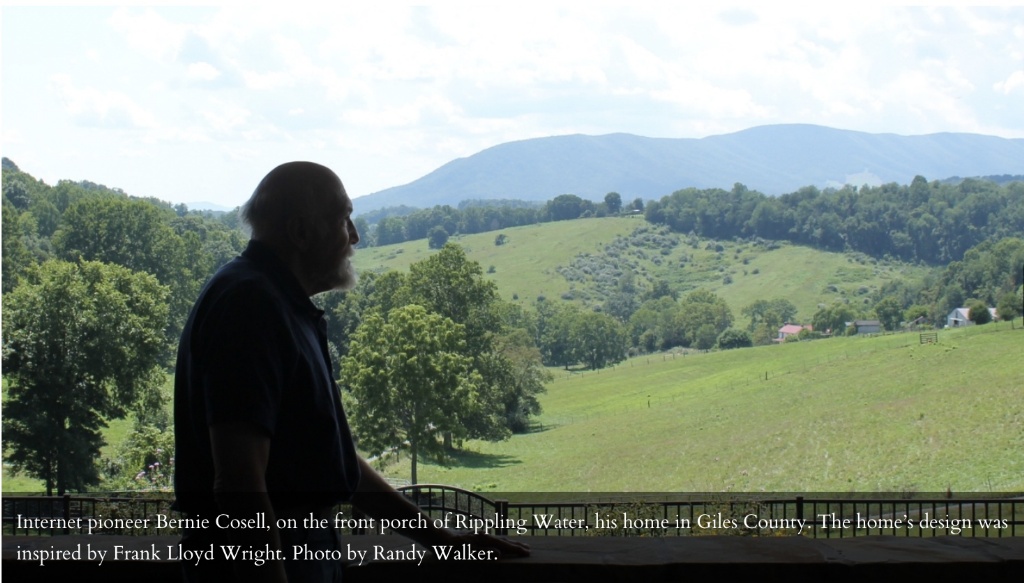On the Beach
Striking photograph by John Darch who, like the fine photographer he is, waited until all the ingredients — including the reflection of the horse in the wet sand — were present before pressing the shutter.
Quote of the Day
“The first rule of tinkering is: Save all the parts”
- David Mamet
Musical alternative to the morning’s radio news
Miles Davis | It Ain’t Necessarily So
Video of the Day
This is an extraordinary short film written by James Graham which was originally screened on the Financial Times site. I’m struck by it because I’m a Professor of the Public Understanding of Technology and this seems to me to be a brilliant example of how to foster that understanding in a compelling way.
It’s 18 minutes long, and really worth it.
So click here to see what I mean.
(And thanks to John Thornhill for helping me locate a copy.)
Long Read of the Day
A small slice of networking history
The precursor of the Internet we use today was the ARPAnet, a packet-switched network funded by the Pentagon’s Advanced Research Projects Agency (ARPA) in the late 1960s. Much to the astonishment of the military-industrial complex of the time, the contract to build the experimental network went to Bolt, Beranek and Newman (BBN), a small tech company based in Boston, Mass.
The purpose of the ARPAnet was to link a number of large, expensive mainframe computers that ARPA had funded in various research labs across the US. One of the defining (and to ARPA’s bosses, infuriating) characteristics of these behemoths was that they could not communicate with one another. They were all build by different manufacturers and, in a sense, incompatible by design. So the BBN team decided to build a number of identical minicomputers — called Interface Message Processors or IMPs — that would sit alongside the mainframes. Each IMP would be programmed to communicate with its neighbouring giant, but would also be able to communicate with its fellow-IMPs on other sites. So at the core of the new network was a set of IMPs.
The IMPs were actually modified versions of a minicomputer manufactured by Honeywell, and the software for them was written by three programmers at BBN — Bernie Cosell, Will Crowther and Dave Walden.
The first IMP was shipped to UCLA in September 1969, followed by the second one, which went to the Stanford Research Institute (SRI) a month later. The story of the first message exchanged between these two IMPS became famous in computer lore. Here’s how I told it in my history of the Net. The IMP, I wrote,
was about the size of a refrigerator, weighed over 900 lbs. and was enclosed in battleship-grey steel, exactly to military specifications – to the point where it even had four steel eyebolts on top for lifting by crane or helicopter. The UCLA crew manhandled in to its assigned room next to the UCLA host machine – a Scientific Data Systems Sigma-7 – and switched it on. The IMP worked straight out of the crate, but for the moment it had nothing to talk to except the Sigma-7. It takes two nodes to make a network. A month later, on October 1, 1969, the second IMP was delivered to Stanford Research Institute and hooked up to its SDS 940 time-sharing machine. With both IMPs in place and both hosts running, a two-node network existed – at least in principle. The moment had arrived to see whether it worked in practice.
What happened was the kind of comic event which restores one’s faith in the cock-up theory of history. The UCLA and SRI sites were linked by telephone, so human dialogue accompanied this first step into the unknown. It was decided that the UCLA side would try to log on to the SRI machine. Years later, Leonard Kleinrock, in whose UCLA Lab the first IMP had been installed, related what happened in an E-mail message to the New Yorker writer, John Seabrook:
”As soon as SRI attached to its IMP, under my directions, one of my programmers, Charley Kline, arranged to send the first computer-to-computer message. The setup was simple: he and a programmer at SRI were connected via an ordinary telephone line and they both wore headsets so they could talk to each other as they observed what the network was doing. Charley then proceeded to ‘login’ to the remote SRI HOST from our UCLA HOST. To do so, he had to literally type in the word ‘login’; in fact, the HOSTS were smart enough to know that once he had typed in ‘log’, then the HOST would ‘expand’ out the rest of the word and add the letters ‘in’ to it. So Charley began. He typed an ‘l’ and over the headset told the SRI programmer he had typed it (Charley actually got an ‘echo’ of the letter ‘l’ from the other end and the programmer said “I got the l”.) Then Charley continued with the ‘o’, got the echo and a verbal acknowledgement from the programmer that it had been received. Then Charley typed in the ‘g’ and told him he had now typed the ‘g’. At this point the SRI machine crashed!! Some beginning!
I love this story. It is about a hinge of history; and yet the drama is undermined by farce which brings everything back to earth. It was the beginning of the wired world – a moment as significant in its way as the moment Alexander Graham Bell muttered “Mr. Watson, come here, I want you” into his primitive apparatus. When Charley Kline typed his L he was taking mankind’s first hesitant step into Cyberspace. And the first result of his step was a crash!
When BBN shipped the IMP to UCLA, Bernie Cosell went with it just to make sure that nobody messed with it. I’ve often wondered what he did afterwards, which is why it was lovely the other day to stumble on this story by Randy Walker in Cardinal News, a nonprofit, nonpartisan news site that serves Southwest and Southside Virginia.
Turns out that Bernie worked at BBN until he and his wife retired, bought 72 acres in rural Virginia, built a dream house (inspired by Frank Lloyd Wright’s Fallingwater) on it and started keeping Merino sheep.
He won’t go down in history as one of the Internet pioneers — like Vint Cerf or Bob Kahn or Leonard Kleinrock or Donald Davies or Paul Baran. But then that’s also true of the many graduate students who worked on the project. “I will”, he told Randy Walker, “be at best a footnote”.
Well, yeah. But the UCLA IMP worked out of the box. And footnotes matter too. Ask any academic.
Twitter’s whistleblower has pitched up at a very inconvenient moment
Yesterday’s Observer column…
Ex-Twitter exec blows the whistle, alleging reckless and negligent cybersecurity policies,” said the CNN headline. My initial reaction? Yawn… so what’s new: a social media company playing fast and loose with its users’ data? And who’s this whistleblower, anyway? A guy called Peiter Zatko. Never heard of him. Probably another tech bro who’s discovered his conscience…
But what’s this? He has a nickname – “Mudge”. (Cue audio of pennies dropping.) The mainstream media calls him a “hacker”, which is their usual way of undermining a gifted software expert. Which this Mudge certainly is. In fact, in that line of business, he has blue-chip status. He was the highest-profile member of a famous hacker thinktank, the L0pht (pronounced “loft”) and a member of the well-known cooperative Cult of the Dead Cow. In that sense, he was a pioneer of “hacktivism” who has spent much of his life trying to educate the world on cybersecurity and has a long list of discovered vulnerabilities to his credit.
During the Clinton administration, he was apparently sometimes involved in national security council briefings of the president…
Do read the whole thing.
This Blog is also available as a daily email. If you think that might suit you better, why not subscribe? One email a day, Monday through Friday, delivered to your inbox. It’s free, and you can always unsubscribe if you conclude your inbox is full enough already!


